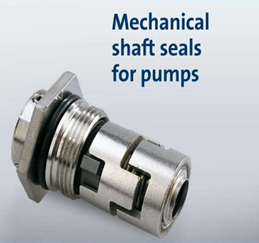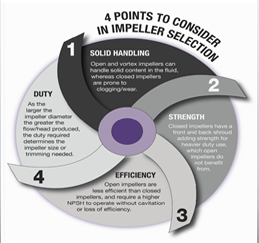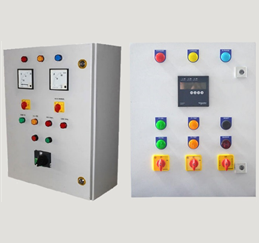 Mechanical SealsA mechanical seal is a very effective device. Every centrifugal pump must put up a spinning shaft while mechanically maintaining fluid or gas contained in the “wet end” of the pump. Mechanical seals consists primarily of a rotary seal face with a driving mechanism which rotates at the same speed as the pump shaft, a stationary seal face which mates with the rotary and is retained using a gland or in some pump models an integral stuffing box cover, a tension assembly (utilizing springs or a metal bellows) keeps the rotary face firmly positioned against the stationary face preventing, excluding, and containing contamination and leakage, both when the pump is not in operation and when the pump shaft is rotating. Static sealing gaskets, O-rings or elastomeric bellows are strategical located to complete the seal assembly. |
 Impellers
The impeller is the rotating component within the centrifugal pump design, which transfers the energy from the pump’s motor to the fluid. It is made up of vanes that come off an open inlet at the centre, known as the eye, which create a centrifugal force as they spin to move the liquid from the casing to the discharge point. There are several types of impellers, each of which offer different performance characteristics that make it more or less suitable than the others for a particular application. Given the vital part it plays in a centrifugal pump’s operation, you can see why the type and size of the impeller is an important factor in pump specification. |
 Pump Control PanelsPump Controls control electric motors that power mechanical pumps. A Pump Control Panel includes power components to control the pump motor, sensors to protect the pump, and pilot devices for operator control. Additional sensors are used to monitor the process for automatic pump operation. |